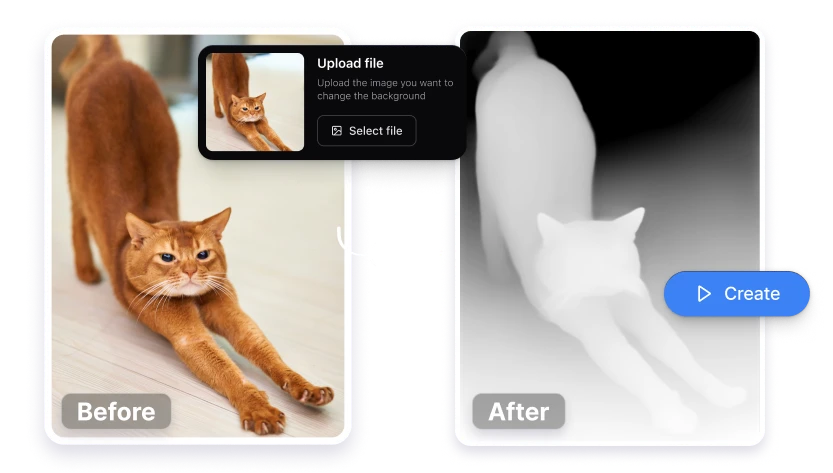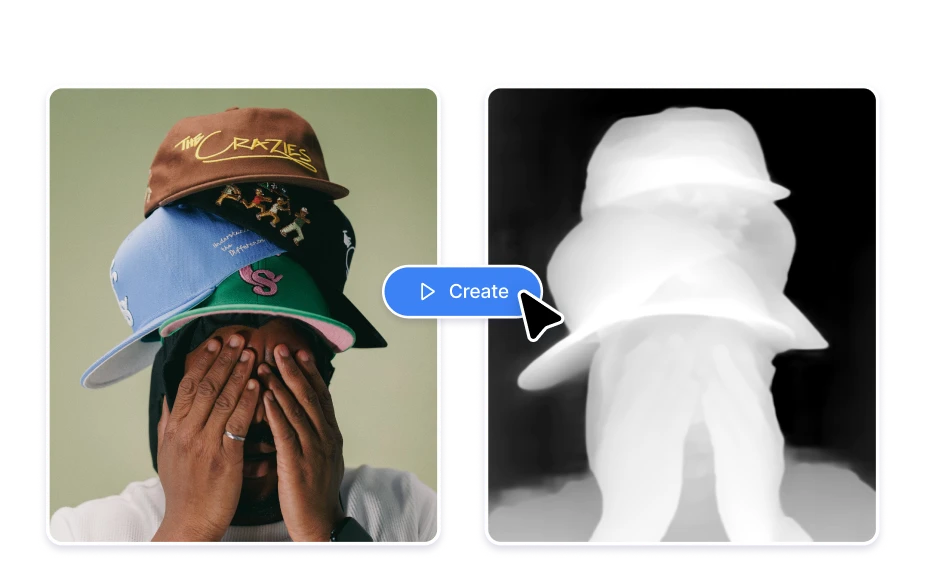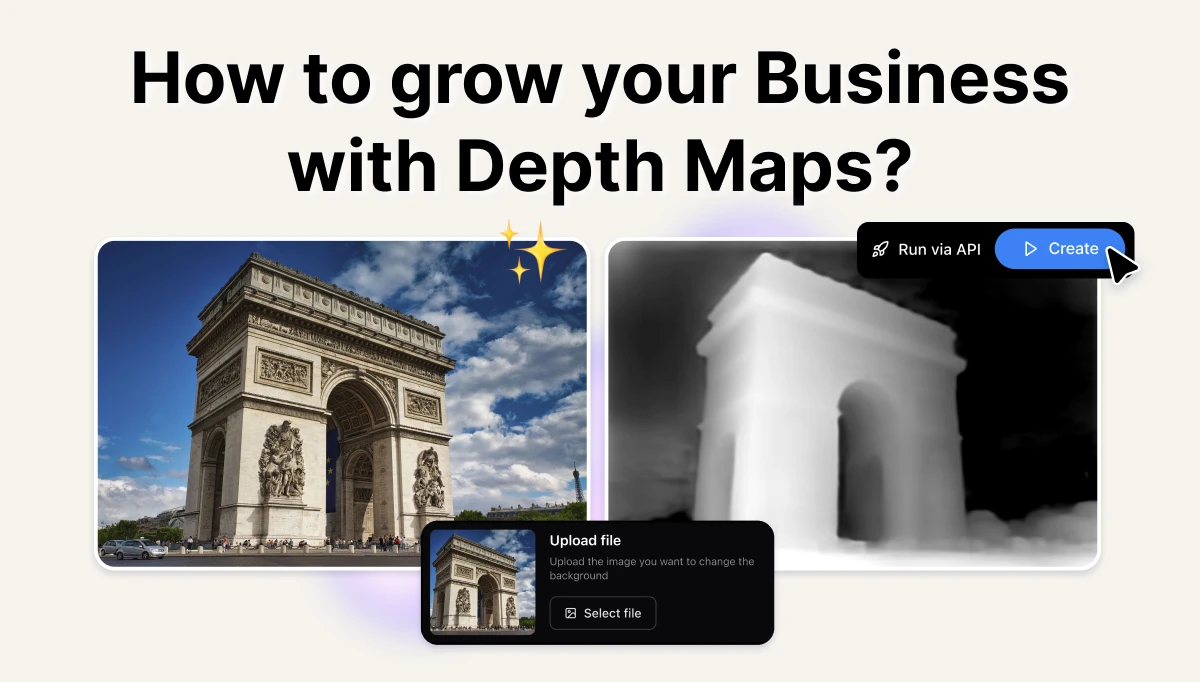The first time I saw a depth map, I didn’t quite understand what I was looking at. It looked like a grayscale version of a photograph, some areas were almost white, others pitch black, with smooth gradients in between. But then I discovered that by using it in 3D software, I could bring my 2D images to life. Flat shapes became layers, objects gained volume, and I felt like I had literally stepped into the scene.
A depth map is exactly that: a hidden layer of information that tells you how far each pixel in an image is from the camera. White areas are closer, black areas are farther away, and everything in between represents depth variation.
Technically speaking, it’s used in image processing, 3D graphics, and even in areas like Blender sculpting and relief carving. But beyond the tech, for creatives, depth maps act as a bridge between static visuals and immersive experiences.
Depth maps aren’t just a creative trick, they can be profitable.

If you run a creative agency, a marketing studio, or a visual production company, you’re always looking for ways to make your work stand out. With depth maps, you can animate campaign videos, produce immersive concert visuals, design interactive museum exhibits, or even create 3D mockups for product launches. Adding depth can elevate a project from “good” to unforgettable.
Depth maps enable you to transform a 2D image into something that moves, breathes, and sells.
Marketing teams use them to simulate realistic depth of field, guiding the viewer’s attention directly to the product. Event designers use them for LED backdrops that feel three-dimensional even on massive concert stages. Game developers and VR creators leverage them to build environments faster. In my research, I even discovered that art preservation companies use depth maps to capture the subtle relief of centuries-old sculptures, allowing them to be digitized and showcased virtually, without endangering the originals.
What’s compelling is their versatility when aligned with business goals. If you can generate depth maps quickly and integrate them into your workflow, you open yourself to entirely new revenue streams. You might offer immersive social media ads, interactive landing pages, animated photo sequences for documentaries, or ultra-realistic simulations for training and education. Suddenly, you’re not just selling an image, you’re selling an experience. And experiences command a premium.
Creating a depth map no longer demands expertise in image processing. Free AI tools like Artificial Studio’s Image to Depth Map let you convert any 2D image into a depth map instantly—ideal for animation, compositing, or 3D projection. That means less time spent on tedious manual work, and more time refining your creative vision, and pitching premium ideas to clients.

If you’ve ever worked in Blender, you know how much smoother sculpting or scene setup is when you already have accurate depth data. Depth maps are that: the blueprint of space.
So what exactly is a depth map? Yes, it’s a technical concept. But for creators, it’s also an invitation: to make your visuals richer, your campaigns more immersive, and your offerings more valuable. The moment you start thinking of animation and motion as your product, is the moment you realize you’ve been sitting on an untapped source of revenue.
In a world where attention is the most precious currency, that’s the kind of depth you simply can’t afford to ignore. Convert your 2D images into depth maps right now for FREE with our AI tool, Image Depth Map.
Mariko - Product Marketing Manager
Related reading:

